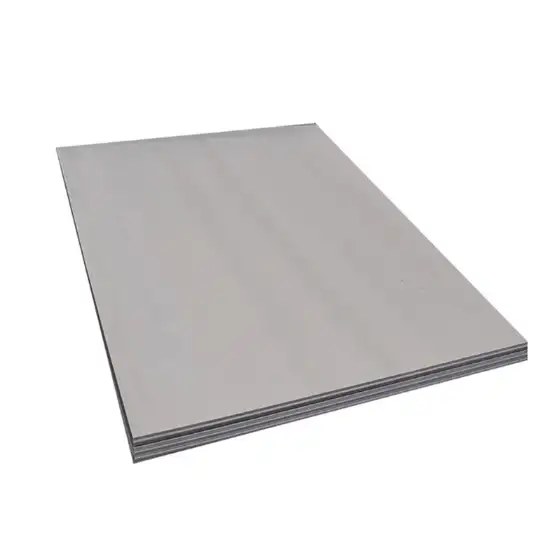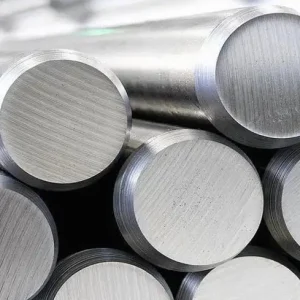NM360 is a quenched-and-tempered, abrasion-resistant steel grade produced to Chinese GB/T abrasion-resistant plate standards; it typically delivers ≈360 HBW surface hardness with high yield and tensile strength suitable for general mining, earth-moving and chute-liner applications — offering a balanced combination of wear performance and cost that makes it a practical alternative to higher-cost imported AR steels for many heavy-duty uses. NM360 is covered by the Chinese national standard GB/T 24186 (NM series) and is widely available from Chinese mills with broad dimension ranges, short lead times and competitive factory prices from suppliers such as MWalloys.
What is NM360 wear-resistant steel plate?
NM360 is a Chinese designation for an abrasion-resistant (AR) steel plate produced to the GB/T abrasion-resistant steel standard family. Plates sold as NM360 are delivered in a quenched-and-tempered condition engineered to produce a nominal Brinell hardness near 360 HBW, combined with elevated yield and tensile strength so components resist abrasive wear while retaining adequate toughness for many structural components used in mining, construction and bulk-handling equipment. The GB/T family (e.g., GB/T 24186 series) governs qualification, mechanical guarantees and test requirements for these steels.
How NM360 is produced
NM-type plates are usually hot-rolled and then subjected to controlled heat treatment (quench + temper) to form a hardened martensitic/bainitic surface microstructure while keeping a tougher core. This process gives a through-thickness combination of hardness and ductility suitable for liners, buckets and chutes.
Chemical composition (typical / guaranteed ranges)
Note: suppliers may supply slightly varied alloy limits — always request the mill chemical certificate (EN10204/3.1 or equivalent) with the shipment.
| Element | Typical range / maximum (wt.%) — NM360 (representative) |
|---|---|
| C (Carbon) | ≤ 0.17 – 0.20 |
| Si (Silicon) | ≤ 0.50 |
| Mn (Manganese) | ≤ 1.50 – 1.70 |
| P (Phosphorus) | ≤ 0.025 |
| S (Sulfur) | ≤ 0.010 – 0.015 |
| Cr (Chromium) | ≤ 0.70 – 1.50 (varies by producer) |
| Ni (Nickel) | ≤ 0.50 – 1.50 (if used) |
| Mo (Molybdenum) | ≤ 0.40 – 0.50 (if used) |
| B, Ti, others | trace additions for hardenability control |
(Table compiled from multiple NM360 data summaries and typical GB/T provisions — always confirm with supplier mill certs.)
Mechanical & material properties
| Property | Typical value / guarantee (NM360) |
|---|---|
| Nominal surface hardness | ~ 350–380 HBW (target ≈360 HBW) |
| Yield strength (ReL) | ≥ ~900–1050 MPa (thickness dependent) |
| Tensile strength (Rm) | ~1100–1180 MPa (typical range) |
| Elongation (A%) | ~10–20% (varies with thickness) |
| Impact energy (Charpy V) | often required; e.g., ≥ 27–65 J at -20°C (supplier dependent) |
| Thickness range available | commonly 6–80 mm (many mills offer 3–100 mm depending on grade) |
| Delivery state | Quenched & tempered (Q+T) per GB/T requirements |
These values are typical vendor guarantees; the mechanical numbers vary with thickness and specific product line. Always request the mill’s test certificate and hardness map for each plate.
NM360 plate specifications & ordering options
| Parameter | Common options / notes |
|---|---|
| Standard designation | NM360 (GB/T) — refer to GB/T 24186 series for full requirements. |
| Thickness (mm) | Common: 6, 8, 10, 12, 15, 16, 20, 25, 30, 40, 45, 50, up to 80 (or more if ordered) |
| Width (mm) | Typically 1000–3500 mm depending on mill capability |
| Length (mm) | Cut to order; common lengths 2000–12000 mm |
| Hardness test | Brinell HBW10/3000 or equivalent surface hardness checks |
| Certificates | EN10204 3.1/2.1, hardness test report, tensile test, chemical analysis |
| Surface finish | HR (hot-rolled) as supplied, shot-blasted for linings if requested |
| Edge condition | Sheared, trimmed, saw cut depending on supplier |
(Exact sizes depend on mill and inventory — custom sizes available with order lead time.)
What is NM360 plate equivalent to?
NM360 is broadly comparable to other international AR steel grades with ~360 HBW hardness class. Equivalents used in industry tables include:
-
JFE Everhard EH-360A / JFE EH360 (Japan) — similar guaranteed surface hardness and toughness in targeted thickness ranges.
-
Hardox ~400 / Hardox 400 (SSAB) — Hardox uses its own numbering; Hardox 400 has nominal HBW ~400 (slightly harder), so NM360 sits a step below the 400/450 family. Use caution when substituting.
-
K-type / Sumitomo K-series (K340 etc.) — some Japanese K-grades are used for similar purposes; check alloy and toughness specs before substitution.
Practical note: “Equivalence” is functional, not exact — hardness, toughness, and guaranteed impact properties vary. For critical designs (e.g., high-impact crushers, cold-climate service), validate equivalence with mill datasheets and application trials.
What is NM360 steel used for?
Typical applications include:
-
Bucket liners, cutting edges and wear plates for excavators and loaders
-
Tipper and truck bodies (liner plates)
-
Chute liners, hopper liners and feed plates in mineral processing plants
-
Crusher liners, screen plates and trommels in aggregate/mining plants
-
Conveyor wear parts, mill liners and slurry handling equipment
Because NM360 balances abrasion resistance and toughness, it is a common choice for medium-to-high abrasive environments where severe impact is moderate.
Advantages — when NM360 is a good choice
-
Cost-effective: Generally lower price than premium branded AR plates (e.g., highest-spec Hardox), offering good life-for-cost.
-
Good abrasion resistance: Typical surface hardness around 360 HBW yields durable life in many bulk-handling contexts.
-
Availability in thicker sizes: Many Chinese mills supplement global supply with wide thickness and dimension choices.
-
Weldable and fabricable: When proper preheat, consumables and procedures are followed, NM360 is weldable and machinable for forming and joining.
Disadvantages & limitations of NM360
-
Not the hardest option: For extreme abrasive wear where higher Brinell (450–600 HBW) is necessary, NM360 will wear faster than higher-grade AR plates.
-
Variable supplier quality: Because NM360 is a wide market grade across many mills, properties and inspection rigor vary—mill certificates and factory audits matter.
-
Impact resistance at very low temperature: Some NM360 variants may not guarantee very low-temperature impact energy; use LE/low-temperature types or other grades if -40°C service is expected. JFE and other OEMs publish LE types for low-temp toughness.
-
Fatigue & repetitive impact: In high-impact or cyclic loading, NM360 may be less suitable than grades engineered specifically for combined impact + abrasion.
Fabrication, welding and hardness control
-
Welding: Use low-hydrogen electrodes compatible with the base metal and heat input control. Preheat and interpass temperatures depend on thickness and CEV; consult the supplier welding bulletin. Post-weld heat treatment is rarely applied to full liners, but local PWHT can be used for critical joints.
-
Cutting & drilling: Plasma cutting and flame cutting are common; expect harder edges (re-hardening) — recommend finish-machining edges used in sliding contact. Drilling in hardened portions should be avoided; drill in core or use carbide tooling.
-
Forming & bending: Bending performance degrades with hardness and thickness; consult mill for minimum bend radius and bend method. Where heavy forming is required, order softer preform or allow extra thickness for grinding to final dimension after forming.
-
Hardness mapping: Obtain supplier hardness map across thickness before fabrication; some plates have surface hardness guaranteed, but through-thickness hardness can vary.
Sizes, plate weight calculation & 2025 price comparison (USA / Europe / China)
Plate weight formula (metric)
Weight (kg) = Length (m) × Width (m) × Thickness (m) × Density (kg/m³)
Using steel density ≈ 7,850 kg/m³.
Example: 2500 mm × 12500 mm × 20 mm = 2.5 m × 12.5 m × 0.02 m × 7,850 ≈ 4,906 kg ≈ 4.91 ton.
Representative price comparison (2025 — indicative bulk/FOB prices)
Important: AR plate prices fluctuate with steel market, alloy content, thickness, certification and shipping. The table below presents typical 2025 mid-market ranges (per metric ton) for NM360 / generic NM AR product classes as seen in marketplace listings and regional price boards. Use the supplier quote for firm pricing. Price sources: China marketplace listings, global sources and local daily price services.
| Region | Typical 2025 price per tonne (USD) — NM360 / equivalent (bulk, FOB/ex-works) |
|---|---|
| China (domestic mills / export offers) | USD 420 – 650 / t (wide variance by thickness, certification and volume). |
| Europe (imported premium & branded AR) | USD 750 – 1,300 / t (branded Hardox and high-cert stock; additional logistics). |
| USA (domestic stock / import) | USD 700 – 1,200 / t (local inventory and branded product premium; availability matters). |
Notes:
-
The lower band in China reflects domestic mill direct pricing and commodity equivalents; branded SSAB Hardox and JFE Everhard commonly carry premiums for guaranteed guarantees and warranty.
-
Prices for thin, high-precision or certified low-temp plates will be higher. Freight, duties and inland logistics change delivered cost substantially.
Quality control, standards & test certificates
-
GB/T 24186 is the Chinese national standard that covers high-strength abrasion-resistant steel plates for construction machinery and defines designation, sizes, mechanical and inspection requirements. Validated copies and standard text should be consulted when specifying NM plates.
-
Mill test certificates (EN 10204 3.1 or equivalent) should include chemical analysis, tensile test, hardness test, impact results (if required) and heat treatment record.
-
Third-party inspection (supplier or buyer appointed) is common for large projects to verify hardness mapping and mechanical properties.
FAQs
Q: Is NM360 the same as Hardox 360?
A: No. Hardox is a trademarked family from SSAB; there is no commercial product called “Hardox 360.” NM360 is a Chinese grade ~360 HBW and is often treated as a mid-hardness AR plate comparable on hardness class, but not identical in chemical control and guaranteed toughness.
Q: Can NM360 be welded to structural steel?
A: Yes, with appropriate welding consumables, preheat and procedure qualification; follow supplier welding bulletin and control heat input to avoid cracking.
Q: Will NM360 cracking occur during heavy impact?
A: In severe impact situations, NM360 may crack sooner than tougher AR grades (LE or specialized impact-tough variants). For heavy impact + abrasion, choose higher toughness, branded or LE grades and validate with trials.
Q: What finishing practices extend NM360 life?
A: Proper fit-up to avoid stress concentrators, avoid sharp edges, use bolting with backing plates, and maintain protective coatings if corrosion is an issue.
Q: How is plate hardness measured?
A: Typically Brinell HBW10/3000; hardness is measured on the surface and sometimes mapped through thickness.
Q: Can I bend NM360 plates on a press brake?
A: Bending is possible but depends on thickness and hardness; always request mill forming guidelines and consider ordering softer preforms for heavy bending.
Q: Does NM360 resist corrosion?
A: NM360 is not corrosion-resistant stainless steel; if corrosion is a factor, specify protective coatings or stainless/duplex solutions.
Q: How do I specify NM360 in contract documents?
A: Specify grade (NM360), standard (GB/T 24186, edition), thickness, hardness guarantee, mechanical property guarantees, required impact temperature (if any), certificates (EN10204/3.1), and inspection plan.
Q: Are there low-temperature NM360 variants?
A: Some mills produce LE (low-temperature) variants or supply additional toughness certifications — if service is below −20 to −40°C, request LE grades and verify impact results.
Q: How much will NM360 save vs premium branded AR plate?
A: Savings vary; often 20–50% lower per ton compared with high-end brand plates (depending on market conditions), but life-cycle cost depends on application — for high wear but low impact, NM360 frequently gives good cost performance.





